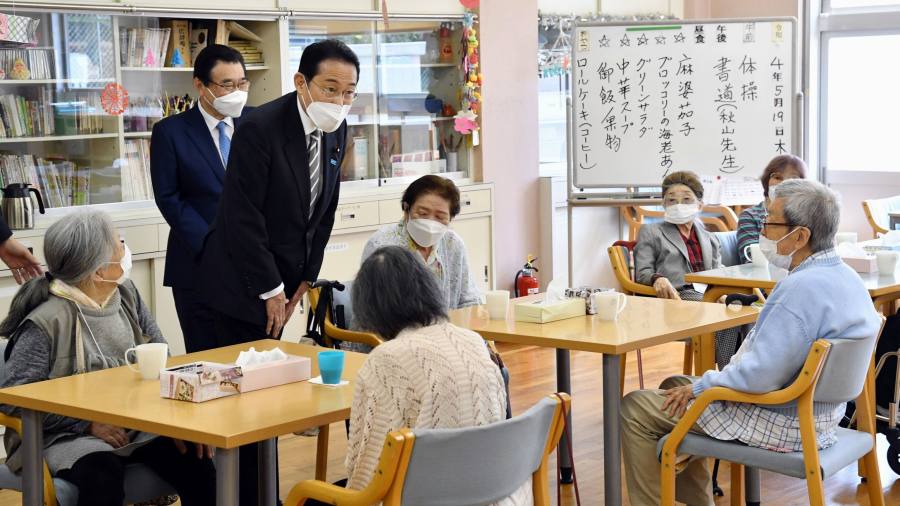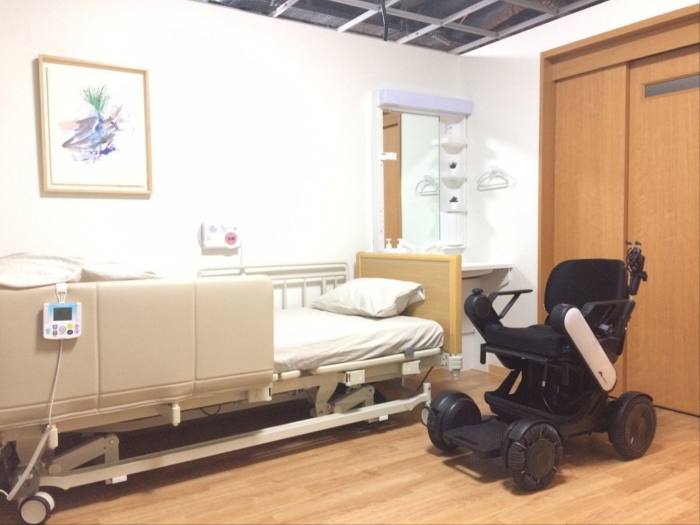
Receive free Healthcare updates
We’ll send you a myFT Daily Digest email rounding up the latest Healthcare news every morning.
As a country characterised by low birth rates and the world’s oldest population — with 30 per cent aged 65 or above — Japan has long faced the challenge of finding carers for a rising proportion of elderly people.
But its care industry is still struggling with chronic staff shortages. Nearly 690,000 additional nurses will be required by 2040 to meet demand, says the health ministry. Last year, 63 per cent of care homes reported a shortage in caregivers — an increase on the 61 per cent from a year before, according to a survey by the Care Work Foundation, an industry advisory group.
So, Sompo Holdings, one of Japan’s biggest insurance companies and the operator of about 280 care homes across the country, has turned to technology to address the problem. Takako Kojima, a care manager at one of its Tokyo nursing homes, says that new methods of analysing data are helping to reduce workloads and tailor care provision.
This home, which cares for 60 residents, last year equipped all of its beds with sensors that measure body movements, breathing and heart rate, to assess sleep conditions. This enables caregivers to use a new tool to predict when residents might need support during the night. It has allowed Kojima and colleagues to better plan staff assignments and so improve efficiency.
“This success has been a big turning point for us to rely more on data analytics,” she says. It means she can dedicate two to three hours a day to communicating with residents, instead of having to handle paperwork or conduct unnecessary patrols. Kojima now has more time to accommodate residents’ requests — such as a trip to a nearby park or their favourite eel restaurant.

“I had thought giving custom-made care to individuals was very challenging given our workload, but I feel I am doing close to what I have imagined as ideal care,” she says.
Sompo’s new processes are the result of a tie-up with Palantir, the US specialist in big data analysis, in which the insurer invested $500mn, in 2020. The companies have developed a software platform that combines artificial intelligence and analytics with proprietary data on areas including sleep, diet, medical treatment and exercise.
Sompo says that, by deploying this technology, the workload in a typical 60-person capacity care home can be reduced by 15 per cent, which translates into cost savings worth $60,000 a year. The data allows caregivers to make accurate predictions of health conditions, such as dementia or mobility problems, from which they can create nursing plans to reduce risk of such diseases — instead of dealing with them only when symptoms appear.
In April, Sompo started selling its software platform to other companies and expects to have signed up 100 Japanese care providers in the fiscal year to March 2024.
Ken Endo, the chief executive of Sompo’s nursing care and seniors business, says “the industry is 100 per cent dependent on people, yet there has been no system in place to deepen your expertise” — a fact that “astonished” him when the company joined the care sector in 2015.
Using big data to predict health outcomes can improve quality of care and allow “people to focus on what only people can do”, he argues. But he insists that any efficiencies also need to result in improved workplace conditions, to motivate employees, and to “raise the social status of caregivers”.
“We need to turn caregiving into a more attractive profession,” he says.
Industry wages are low. Care workers’ average monthly pay last year, excluding bonuses, stood at $1,800 — 25 per cent lower than the national average, according to health ministry data. Sompo, which awarded its biggest pay rise to date last year, of up to 11 per cent, has one of the lowest staff turnover rates among care homeowners.
Japan operates a system of universal elderly care, under a long-term insurance scheme set up in 2000. Users pay about 10 per cent of the cost, with government funding the remainder. But, while the government has increased the fees paid to care providers, pressure from inflated social security costs meant it has been difficult to lift wages.
Kayo Uemura, an associate at Development Bank of Japan who advises government on robotics in nursing, says the tens of thousands of small businesses that make up Japan’s elderly care sector have been slow to adopt digital tools, as they lack economies of scale. However, she adds: “If Sompo can establish a standardised system integrating the technology, it would overturn the industry, which has conventionally been hesitant to embrace new tools.”